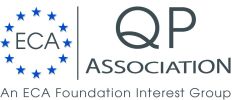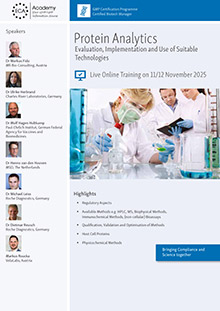Vulnerabilities in global Supply Chains: Reasons and possible Solutions
The EU Commission has published a document on a "Structured Dialogue on the security of medicines supply". The document is based on a mandate for a dialogue of different actors in the value chain of medicines from manufacturing, authorities, non-governmental organisations as well as from research. The aim was to gain a better understanding of the functioning of global pharmaceutical supply chains and to identify causes of potential vulnerabilities. The document now published presents the most important results of the analysis of supply security and possible measures.
Vulnerabilities of pharmaceutical supply chains
The following weaknesses were identified in the dialogue:
- Increasing complexity and specialisation of pharmaceutical supply chains
- Challenges related to the production process and technologies
- Dependencies, including lack of geographic diversification,
- Exploiting the potential of data to improve predictability of supply and demand Predictability
- Regulatory complexity (especially different regulatory requirements in different regions)
Discussion on how to improve the problem
In order to improve the safety of the drug supply, the following measures were discussed:
Identification of critical medicines
According to the document, there are over 530,000 marketing authorisations for medicinal products on the EU market with more than 13,000 active substances (including combinations). Therefore, it was decided to limit the scope and evaluation to medicinal products that are considered particularly critical due to their importance for public health and patient care.
In the first phase of the structured dialogue, a draft methodology for identifying these critical medicinal products was developed. This takes into account two complementary criteria, namely the therapeutic indication of the medicinal product and the availability of suitable alternatives.
Determination of strategic dependencies incl. manufacturing capacities in the EU
A detailed analysis by marketing authorisation holders is needed to determine dependencies related to the supply of raw materials, intermediates and active ingredients for critical medicines. Further analysis could also examine the degree of diversification of suppliers if there are dependencies in raw materials, APIs and excipients used in the manufacture of these medicines.
It may also be necessary to discuss how supply could be ensured through strategic stockpiling of key raw materials or APIs for critical medicines.
Optimising the regulatory environment
In the participants' reports, industry representatives outlined the challenges related to regulatory obligations in EU pharmaceutical legislation. In practice, compliance with regulatory procedures is very complex and cumbersome. The EU regulatory system is also not technically up to date in terms of the use of digital tools.
The Medicines Strategy announced that the Commission will propose a review of EU pharmaceutical legislation to improve the overall efficiency of regulation, e.g. by simplifying and streamlining procedures, enabling timely adaptation of technical and technological development and improving life-cycle management of medicines.
Greater digitisation of marketing authorisation applications would also facilitate cooperation between regulators at EU level and support more efficient management of product lifecycle changes, leading to more agility in supply chains.
Promoting green and digital innovations in manufacturing
The ability of the pharmaceutical industry to deliver high-quality innovative products and manufacturing processes is a prerequisite for security of supply. Digital transformation could improve Europe's competitiveness by reducing production costs and cycle times. The benefits of this transition could also help to address weaknesses identified in supply chains and to create efficiencies in operations. These could bear additional costs for the green transition. Digital technologies are needed to increase the visibility of inventory in the supply chain (to prevent or mitigate bottlenecks) and thus improve the flexibility, reliability and efficiency of manufacturing and supply processes. Developing more environmentally efficient manufacturing processes that use less fossil raw materials, solvents and energy also contributes to improved security of supply and reduced dependence on third countries.
Promoting pricing and procurement practices
The setting of public procurement policies and strategies is the responsibility of the Member States, where mutual learning should be further promoted through the exchange of information and best practices on pricing, payment and procurement policies.
Better knowledge of supply chains: digital tools and data collection mechanisms
The information that marketing authorisation holders are required to submit when applying for a marketing authorisation does not currently serve to improve supply chain transparency and the resilience and security of the medicines supply. However, they could enable authorities to map the supply chain of a medicinal product more accurately and thus contribute to security of supply. Thus, once it is possible to transmit such information to the EMA or national competent authorities in a commonly agreed digital format, additional tools can be developed to enable appropriate and up-to-date analysis.
For example, it would be useful to assess the extent to which companies (which are often competitors) rely on the same few sources of supply, e.g. of raw materials or active ingredients, and where this poses the greatest risk in the supply chain for critical medicines.
Increased global cooperation
As the manufacture and trade of medicines is highly globalised, efforts to increase regulatory harmonisation and convergence at the global level could be useful. In this way, supply chains could be strengthened by promoting high quality and safety standards and streamlining regulatory requirements for marketing authorisation holders.






